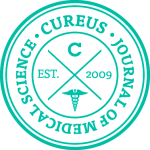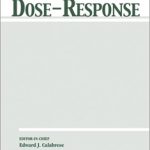by Karin Thieves
Homeopathic Basic Research on the example of Plant Research
Sola Salus - Institute for Homeopathic research

Homeopathic research is carried out since the late 18th Century – even the founder of homeopathy, the German physician Samuel Hahnemann initiated and performed scientific studies of soldiers suffering from typhoid fever. The most characteristic feature about the development of Homeopathy is the strict observance of the inductive method of research that Hahnemann adopted. Careful experiments were instituted, all preconceived theories were ostracized, and the results and rigid deduction from them were not published until years have elapsed in which to verify all the statements. This good practice of search should be the guiding factor for all homeopathic research work.
In 1923 Lili Kolisko1 published her first homeopathic experiments with plants, especially with seedlings. In 1925 it was followed by a work of Junker2, which also dealt with the problem of extremely diluted substances when trying to replicate Kolisko’s findings.
Throughout the past decades Pelikan3 (1926), Maag4 (1928), Nysterakis5 (1949), Netien6 (1962), Boiron7 (1963), Pelikan8 (1971), Graviou9 (1971), Weingärtner10 (1985), Pongratz11 (1990, 1991, 1994, 1998), Betti12 (1994, 2003), Brizzi13 (2000, 2005), Binder14 (2005), Baumgartner15 (2004, 2008), Nani16 (2007), and Lahnstein17 (2009) investigated and tested seedlings inter alia.
Based on this valuable tradition and the findings thereupon, it appeared quite attractive to start working in this field, whereby Univ.-Prof. Dr. Frass played a leading part after sitting in on class for Homeopathy at the Medical University Vienna. After several discussions and various considerations the idea of establishing an Institute for Homeopathic Basic Research was set up in 2009.
The first test series with wheat seedlings (Triticum saetivum) and gibberellic acid (GA3) was initiated revealing a lot of additional questions without answers. However, the enthusiasm and curiosity was sparked followed by a time of intense seeking for better and handy test design to eliminate variables, and to combine conventional test methods for seed in agriculture with homeopathic regulations as prescribed in the homeopathic pharmacopoeia (HAB). After a thorough and intense inquiry the rules and regulations of the ISTA (International Seed Testing Association, http://www.seedtest.org) were discovered.
ISTA was founded in 1924 with the aim to develop and publish standard procedures in the field of seed testing world-wide. In section 14 of the ISTA Handbook on Seedling Evaluation a precise description was finally obtained for a stringent evaluation of the presented growth effects.
A revised test series was initiated with the newly adopted rules ending up in a bunch of additional queries. The applied wheat did not meet the requirement of a solid test material. Even if the wheat is controlled and certified by an official agent and is in line with the pre-requisites of the seed regulations (§ 14 SaatG as amended on 01 Jan 2012 in Austria and § 12 SaatVO as amended on 23 Jul 2008 in Germany), the seed is not homozygous, which constituted a serious dilemma. The dilemma is the variety of each single grain. Confronted with this obstacle, another intensive hunt started to find a suitable grain excluding variances.
In the meantime an optimized testing started already including good test practice as discussed and concluded during the Delphi Process (Stock-Schröer18 2009) plus the rules of the ISTA inclusive suitable grains completes the basis of a currently good test design assuming to be in the position to publish a preliminary result in 2012.
Returning to the homeopathic patriarch of Köthen, Hahnemann claimed that the therapeutic background and aim of the art of medicine is to cure disease, and the physician’s highest ideal of a cure, as indicated in Art 2 of the Organon, is the rapid, gentle and permanent restoration of health, or the removal and annihilation of disease in its whole extent, in the shortest, most reliable and most harmless manner, and on easily comprehensible principles, that is, with the least possible expenditure of time, money, vitality and suffering. Carrying those words as task, homeopathic basic research is a valuable asset to support Hahnemann findings and hopefully, once in a while, to prove evidence of the theory.
References
[1] Kolisko L. Physiologischer Nachweis der kleinsten Entitäten, Stuttgart: Der Kommende Tag AG, 1923
[2] Junker H. Die Wirkung extremer Potenzverdünnungen auf Organismen, Biologisches Zentralblatt 45 H I 1925, S. 26
[3] Pelikan W. Experimentelle Untersuchungen über die Gestaltung der Lebens-Prozesse aus dem Kosmos. Gäa Sophia 1926;(1) Jahrbuch der naturwissenschaftli-chen Sektion der Freien Hochschule für Geisteswissenschaft. Band I, 1926. Dornach
1926, 426 S. (Naturwissenschaftliche Sektion am Goetheanum) Der Einfluss der verschiedenen Ätherarten auf die Pflanze
[4] Maag GW. Planeteneinflüsse. Konstanz: West-Ost-Verlag, 1928.
[5] Nysterakis F. Sur la grande sensibilité du test ‘‘vrille’’ à l’été roauxine. Comptes Rendus Académie des Sciences Paris 1949; 229(1): 527
[6] Netien G. Action de dilutions homéopathiques sur la respiration du coleoptile de blé. Ann Homeop Fr 1962; 4(10): 823–827.
[7] Boiron J, Zervudacki M. Action de dilutions infinitèsimales d’arséniate de sodium sur la respiration de coléoptiles de blé. Ann Homeop Fr 1963; 5(10): 738–742.
[8] Pelikan W. Wirkungsnachweis potenzierter Substanzen durch Pflanzenwachstums-versuche. Potenzierte Heilmittel–Ursprung, Wesen und Wirkungsnachweis von dynamisierten Substanzen. Stuttgart: Verlag Freies Geistesleben, 1971, pp 63-82.
[9] Graviou E, Biron MA. Action d’une 15CH de sulfate de cuivre sur Lepidium en germination. Ann Homeop Fr 1971; 13(7): 531–538.
[10] Weingärtner O, Scholz W,Wolf R, Nagl W. Reaktionen eines pflanzlichen Zellsystems auf die Zugabe eines homöopathischen Komplexmittels und seiner Bestandteile. Ärztezeitschrift für Naturheilverfahren 1985; 26(10): 670–682.
[11a] Pongratz W, Bermardinger E, Moser M, Varga F. Die Wirkung von potenziertem Silbernitrat auf das Wachstum von Weizen. Mitteilungen des Instituts für Strukturelle Medizinische Forschung 1990; 2: 3–7.
[11b] Pongratz W, Heydel B. Zuwachs von Zellkulturen von Hypericum perforatum unter dem Einfluss potenzierten Kinetins. ISMF: Mitteilungen des Instituts für Strukturelle Medizinische Forschung 1990; 2: 8–13.
[11c] Pongratz W, Kovac H, Heydel B. Zellkulturen unter dem Einfluss von Kinetin D24. Mitteilungen des Instituts für Strukturelle Medizinische Forschung 1991; 3: 64–67.
[11d] Pongratz W, Endler PC. Reappraisal of a classical botanical experiment in ultra high dilution research. Energetic coupling in a wheat model. In: Endler PC, Schulte J (eds). Ultra High Dilution. Dordrecht: Kluwer Academic Publishers, 1994, p. 19–26
[12a] Betti L, Brizzi M, Nani D, Peruzzi M. A pilot statistical study with homeopathic potencies of arsenicum album in wheat germination as a simple model. Br Homeopath J 1994; 83(4): 195–201.
[11e] Pongratz W, Nograsek A, Endler PC. Highly diluted agitated silver nitrate and wheat seedling development. Effect kinetics of a process of successive agitation phases. In: Schulte J, Endler PC (eds). Fundamental Research in Ultra High Dilution and Homeopathy.Dortrecht: Kluwer Academic Publishers, 1998, p. 155–187.
[13a] Brizzi M, Nani D, Peruzzi M, Betti L. Statistical analysis of the effect of high dilutions of arsenic in a large dataset of a wheat germination model. Br Homeopath J 2000; 89: 63–67.
[12b] Betti L, Borghini F, Nani D. Plant models for fundamental research in homeopathy. Homeopathy 2003; 92: 129–130.
[15a] Baumgartner S, Thurneysen A, Heusser P. Growth stimulation of dwarf peas (Pisum sativum L.) through homeopathic potencies of plant growth substances. Forsch Komplementarmed Klass Naturheilk 2004; 11: 281–292.
[14] Binder M, Baumgartner S, Thurneysen A. The effects of a 45x potency of Arsenicum album on wheat seedling growth – a reproduction trial. Res Compl Med/Forsch Komplementärmed 2005; 12: 284–291
[13b] Brizzi M, Lazzarato L, Nani D, Borghini F, Peruzzi M, Betti L. A biostatistical insight into the As2O3 high dilution effects on the rate and variability of wheat seedling growth. Res Compl Med/Forsch Komplementärmed 2005; 12: 277–283.
[16] Nani D, Brizzi M, Lazzarato L, Betti L. The role of variability in evaluating ultra high dilution effects: considerations based on plant model experiments. Forschende Komplementärmedizin 2007; 14(5): 301–305
[15b] Baumgartner S, Shah D, Schaller J, Ka¨mpfer U, Thurneysen A, Heusser P. Reproducibility of dwarf pea shoot growth stimulation by homeopathic potencies of gibberellic acid. Complement Ther Med 2008; 16: 183–191.
[17] Lahnstein L, Binder M, Thurneysen A, et al. Isopathic treatment effects of Arsenicum album 45x on wheat seedling growth – further reproduction trials. Homeopathy 2009; 98: 189–207
[18a] Stock-Schroer, B.; Albrecht, H.; Betti, L.; Dobos, G.; Endler, C.; Linde, K.; Ludtke, R.; Musial, F.; van Wijk, R.; Witt, C.; Baumgartner, S.: “Reporting Experiments in Homeopathic Basic Research–Description of the Checklist Development.” Evid Based Complement Alternat Med 2009 Nov 1.
[18b] Stock-Schroer, B., Albrecht, H., Betti, L., Endler, P. C., Linde, K., Ludtke, R., Musial, F., van Wijk, R., Witt, C., Baumgartner, S. (2009): Reporting experiments in homeopathic basic research (REHBaR)–a detailed guideline for authors. Homeopathy 98 (4), 287-98.
Fonte: Karin Thieves







